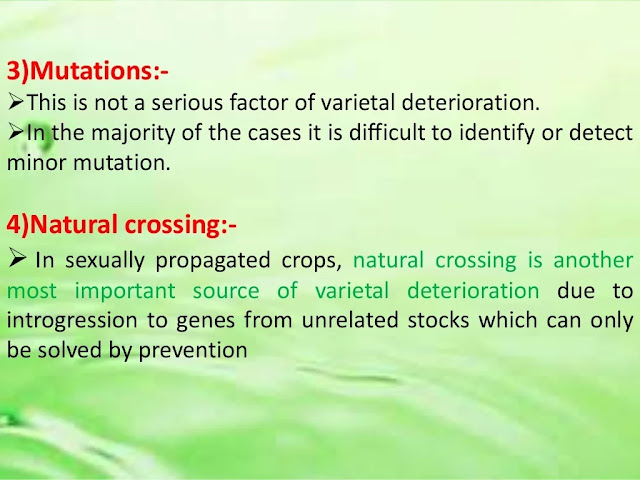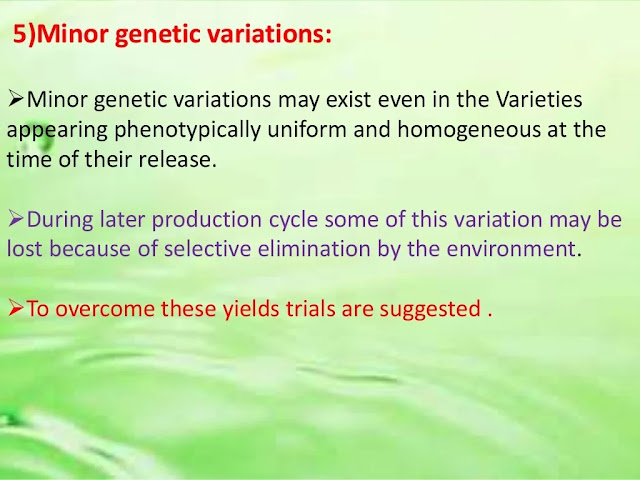LET'S START OUR CLASS
UNIT-8
Principles of seed production:
A crop variety to be grown for seed production in an area must be adapted to the photoperiod and temperature conditions prevailing in that area.
Selection of seed plot
The plot selected for seed crop must be free from volunteer plants, weed plants and have good soil texture and fertility The soil of the seed plot should be comparatively free from soil borne diseases and insects pests.
Isolation of Seed crops
The seed crop must be isolated from other nearby fields of the same crops and the other contaminating crops as per requirement of the certification standards.
Preparation of Land
Good land preparation helps in improved germination, good stand establishment and destruction of potential weeds. It also aids in water management and good uniform irrigation.
Selection of variety
The variety of seed production must be carefully selected, should possess disease resistance, earliness, grain quality, a higher yielder, and adapted to the agroclimatic conditions of the region.
Seed treatment:
Depending upon the requirement the following seed treatment may be given
Chemical seed treatment.Bacterial inoculation for the legumes.Seed treatment for breaking dormancy.
Time of planting
The seed crops should invariably be sown at their normal planting time. Depending upon the incidence of diseases and pests, some adjustments, could be made, if necessary.
Seed Rate
Lower seed rates than usual for raising commercial crop are desirable because they facilitate rouging operations and inspection of seed crops.
Method of sowing
The most efficient and ideal method of sowing is by mechanical drilling.
Depth of sowing
Depth of sowing is extremely important in ensuring good plant stand. Small seeds should usually be planted shallow, but large seeds could be planted a little deeper.
Rouging:
Adequate and timely rouging is extremely important in seed production. Rouging in most of the field crops may be done at many of the following stages as per needs of the seed crop.
Principles and schemes of nucleus, breeder’s and foundation seed production: यो अहिले नलेख्नु होला!!
Start from here:
Hybrid seed:
In agriculture and gardening, hybrid seed is seed produced by cross-pollinated plants. Hybrid seed production is predominant in modern agriculture and home gardening. It is one of the main contributors to the dramatic rise in agricultural output during the last half of the 20th century. The alternatives to hybridization are open pollination and clonal propagation. All of the hybrid seeds planted by the farmer will produce similar plants, while the seeds of the next generation from those hybrids will not consistently have the desired characteristics. Controlled hybrids provide very uniform characteristics because they are produced by crossing two inbred strains. Elite inbred strains are used that express well-documented and consistent phenotypes (such as high crop yield) that are relatively good for inbred plants.










